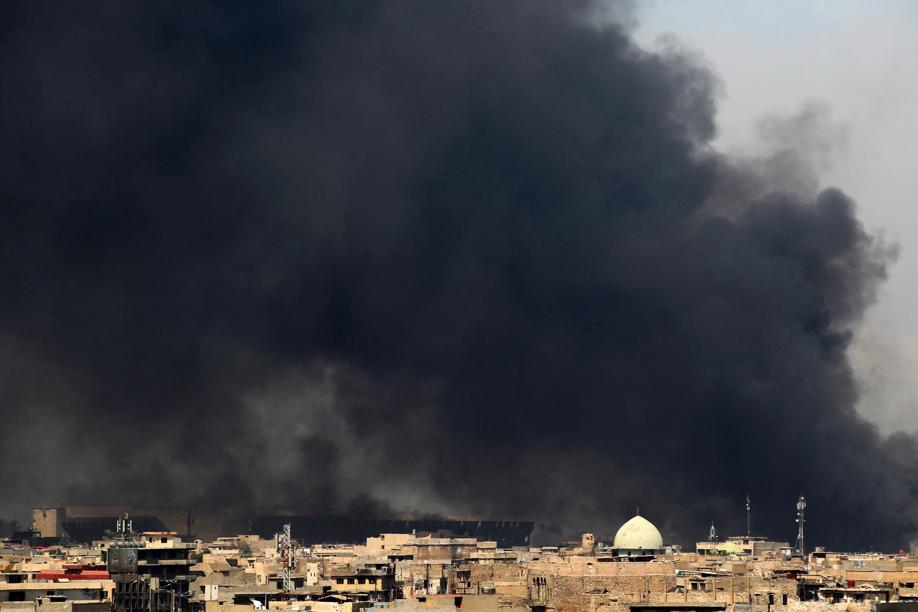
BAGHDAD — The United Nations said Monday that nearly half a million civilians have fled Mosul since US-backed Iraqi forces launched a wide-scale military operation last October to retake the city from the militants who call themselves the Islamic State.
The UN Office for the Coordination of Humanitarian Affairs said 493,000 people have been displaced from the city. As many as 500,000 others are still living in militant-controlled parts of western Mosul, where fighting is still going on.
The UN said that food, water, and medicine stocks are running low in the western half of the city, and that the fighting there is much heavier than it was in eastern Mosul, which the Iraqi government declared fully liberated in January.
It is hard to be sure how many civilians have been killed or wounded since the battle for western Mosul began nearly two months ago.
The UN said at least 300 people have been killed, while the Nineveh provincial health department reckons that the real number could be closer to 1,000. At least 1,600 cases of trauma have been admitted to Iraqi and Kurdish hospitals since Feb. 18.
The militants who took over Mosul in 2014 were driven out of the eastern sector by Iraq’s elite counterterrorism force in January. But much of the fighting in the city’s western districts has been done by the militarized federal police force.
Part of the police unit’s work in western Mosul involves staffing checkpoints and interacting with civilians, some of whom remain in the area despite the fighting.
Many police come from distant parts of Iraq, know little of Mosul, and suspect that militants or their supporters might have blended into the population. They are wary because forces have been hit by suicide attacks from the militants.
The police unit has been trying to flush out the militants by firing mortar shells over buildings they are believed to be hiding in. That’s one reason western Mosul has been wrecked so badly.
According to a terrain analysis done by the United Nations, there is about two and a half times more destruction in western Mosul than in the eastern half, and the extremists have not been fully driven out of the west yet.
Government artillery units pour vast amounts of fire into the parts of the city under ISIS control. Airstrikes target snipers, sometimes bringing down several buildings in the hunt for a single militant.
The western part of Iraq’s second-largest city is a landscape of half-collapsed buildings, burned-out cars, and rubbish-strewn streets. Helicopters hover and barricades of sandbags block the streets.



